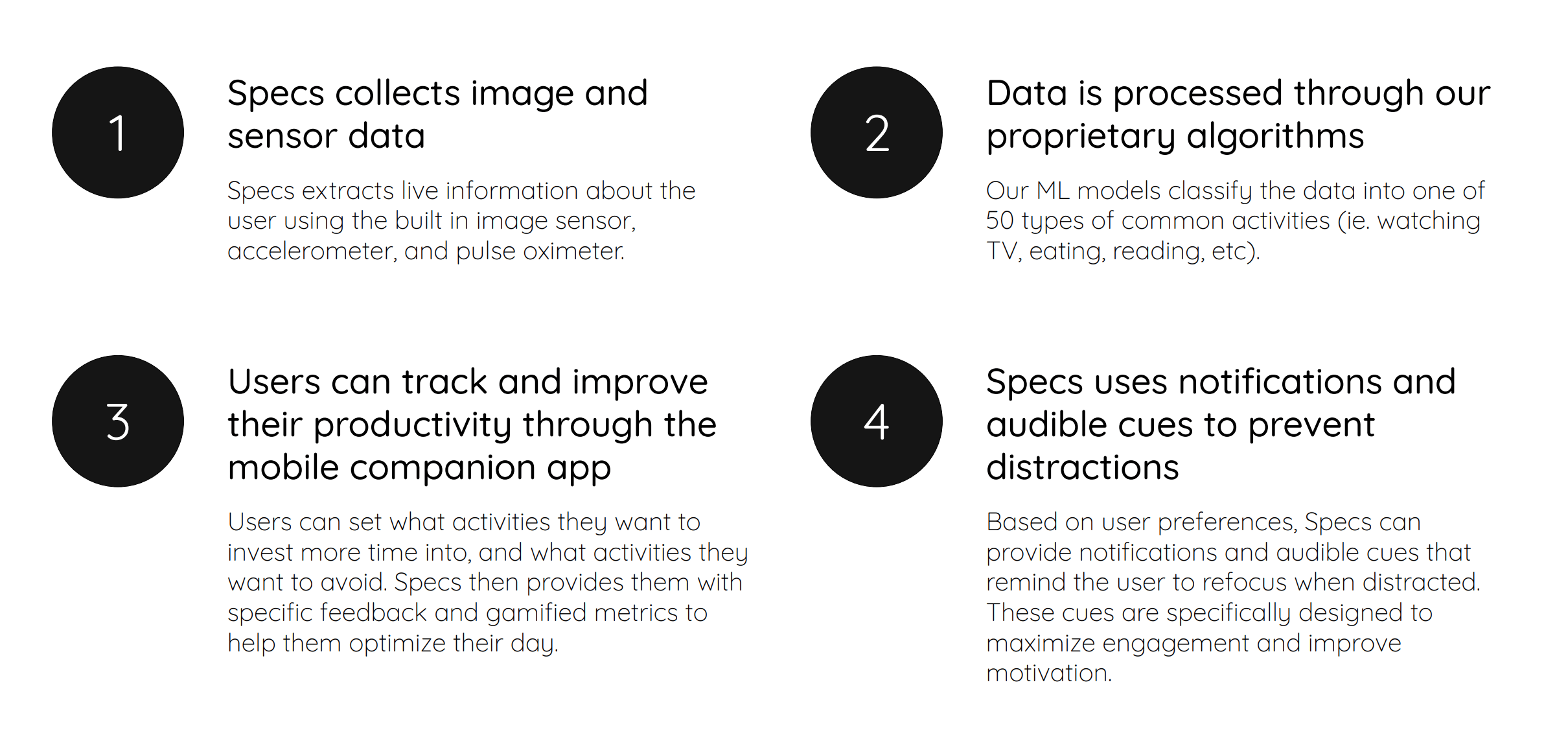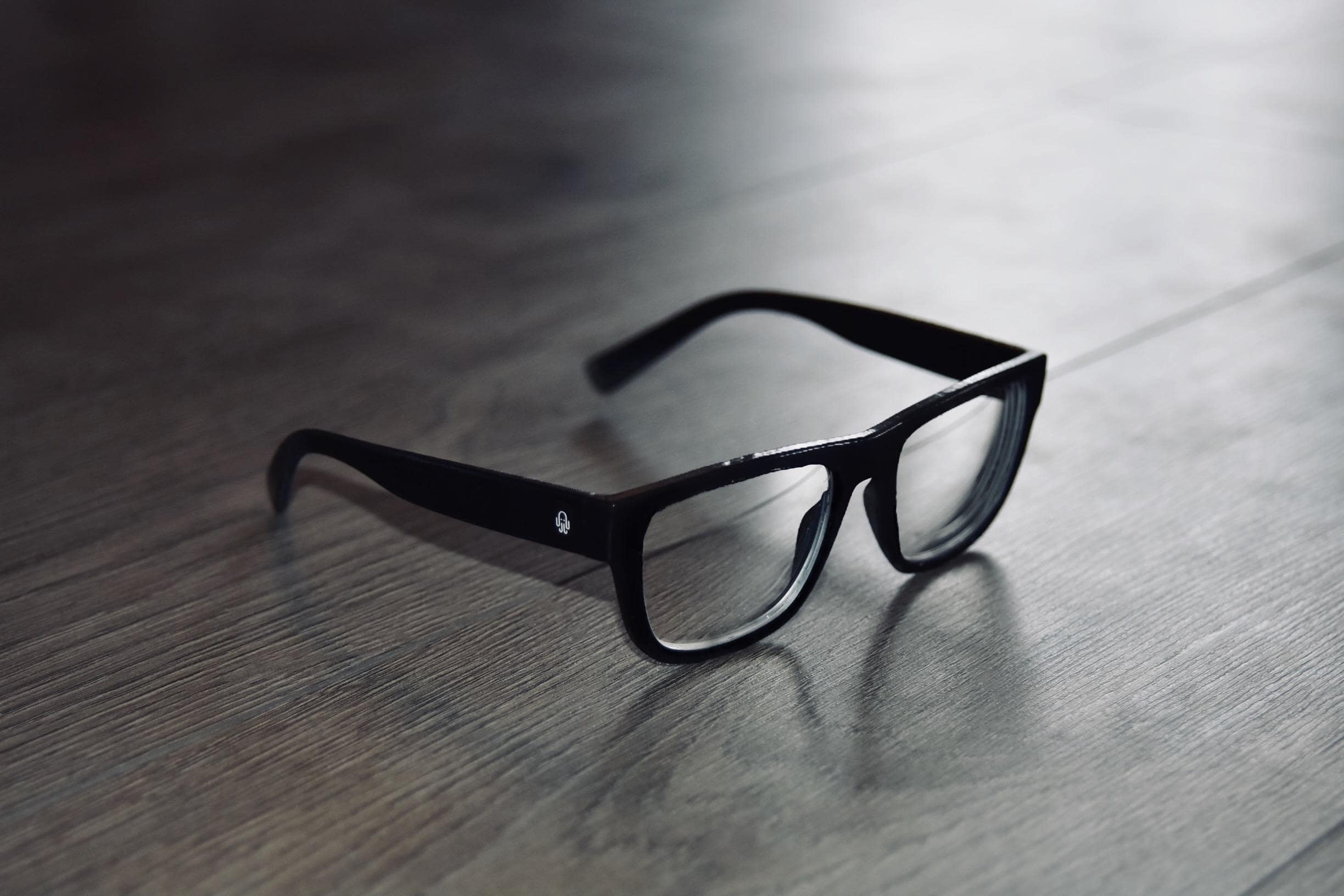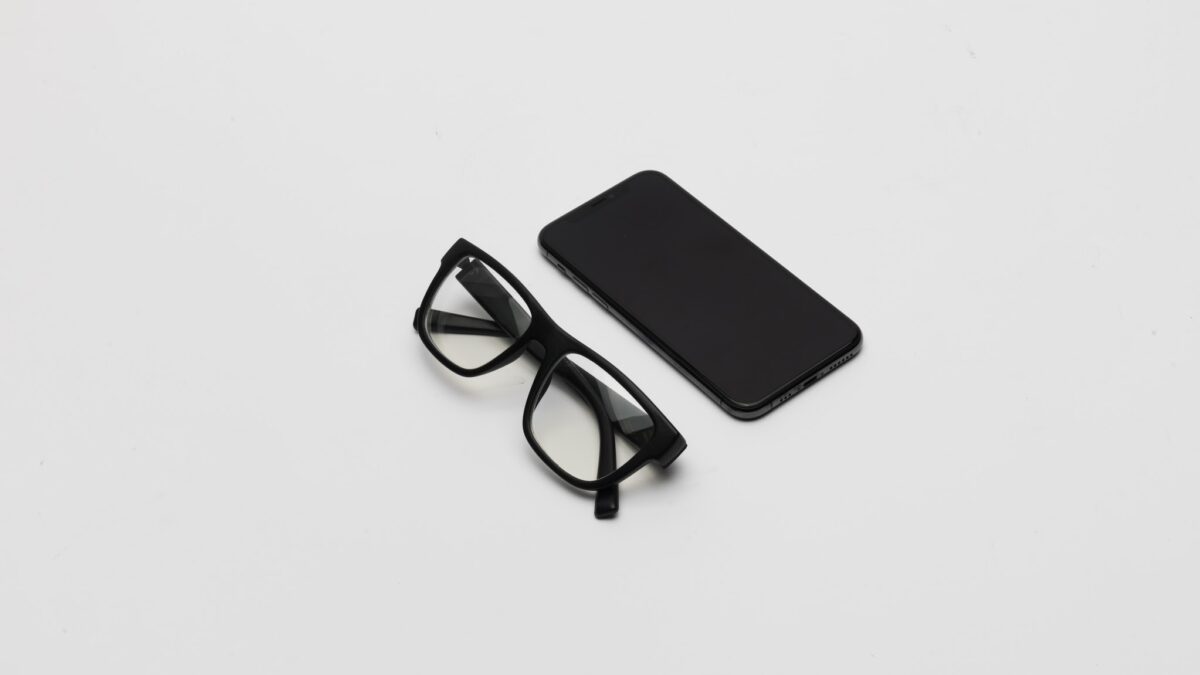For years, the smart glasses industry has gone through an obstinate cycle of inflation and disappointment – mainly because what consumers wanted, and what companies thought consumers wanted were two very different things.
Companies like Google and Epson thought that smart glasses should look, well, smart. The prevailing belief was that smart glasses shouldn’t look like regular glasses because their distinctiveness would appeal to customers.
In addition to the technical challenges of making electronic hardware extremely compact, this lead the industry into a dead-end when it came to consumer-facing applications.
1. Auctify founders Arthur (left) and Hisham (right)

When Arthur Nguyen-Cao and Hisham El-Halabi founded Auctify, they decided early on that Specs have to be completely indistinguishable from regular glasses.
“We noticed that a lot of people were buying and returning smart glasses because it didn’t live up to their expectations – they didn’t look natural in public,” Hisham said.
2. Specs are completely indistinguishable from regular glasses

The result? Specs prototypes look and feel precisely like regular glasses. This could be the long-awaited beginning of normalized smart glasses.
But Auctify’s goal is much bigger than just making smart glasses stylish. Their main goal is to help people stay focused and motivated. “A lot of people, particularly young people and students, struggle with procrastination. Surveys indicate that 25% of undergraduate students resort to harmful stimulants such as Adderall or Ritalin to stay on top of their workload. We want to reduce that number to zero.” Arthur said.
Rather than putting a distracting screen in front of your eyes, Specs is packed with sensors that relay data to your phone and provides you with valuable insights into your work habits at the end of the day.
How does it do this? The founders say that they’ve developed a proprietary AI model that can detect exactly when you lose focus, using computer vision and pulse oximetry.
3. How Specs Work

Specs can also be set to send audible cues and notifications to you when you get distracted or lose focus – and give you personalized feedback to help you stay motivated.
Auctify has even consulted with psychologists and neuroscientists to develop the most effective mental strategies for keeping people motivated and focused.
“The Auctify Specs are the first of its kind – a novel wearable device that keeps people focused.”
– Dr. Robert Chen, Neurologist & Senior Scientist (Krembil Research Institute)
“We didn’t want Specs just to tell users what they were doing wrong; we wanted Specs to give them personalized feedback – a clear path to reaching all of their goals,” Arthur said.
Specs not only help you with your time management, but it also lets you play music through their bone-conducting sound transducers, take calls, and track steps/calories burned.
Unlike other smart glasses companies, Auctify is not planning to open up an API for developers to create custom features, although this may change in the future.
“Ensuring that user data stays private and secure is one of our top priorities. We are not prepared to compromise that – even if it were to help add new features to the platform,” Arthur said.
4. The Auctify Specs

Specs can come in prescription, non-prescription, and sunglass lenses. If you want a pair, they’ll cost $279 when they launch on Indiegogo later this month, and you can reserve them online at www.auctify.ca. Hisham says that Specs will most likely start shipping in the fall.
Tech Trends
Related posts
Leave a Reply Cancel reply
Hot Topics
Categories
- Ads (5)
- Animes (25)
- Artificial Intelligence (AI) (35)
- Augmented Reality (AR) (10)
- Automotive (9)
- Bitcoin (16)
- Blockchain (24)
- Business (244)
- Business Intelligence (3)
- Cloud Computing (23)
- Computer (128)
- Concrete Technology (1)
- Cryptocurrency (10)
- Cybersecurity (42)
- Data Science (9)
- Database (4)
- DevOps (6)
- Digital Marketing (76)
- Digital Workplace (14)
- Ecommerce (1)
- Education (28)
- Electric Vehicle (EV) (1)
- Electronics & Hardware (17)
- Entertainment (42)
- Fabrication (3)
- FAQ's (1)
- Finance & Marketing (47)
- Gadgets (35)
- Games (8)
- Gear (29)
- HTTPS (1)
- Industry (46)
- Information Technology (90)
- Internet (413)
- Internet of Things (IoT) (41)
- Job (25)
- Machine Learning (6)
- Marketing (92)
- Mobile Apps (21)
- Movies (11)
- Natural Language Processing (6)
- News & Trends (109)
- Programming (4)
- Science & Technology (235)
- Security (81)
- SEO (56)
- Services (36)
- Social Media (73)
- Software (99)
- Sports (1)
- Technology (306)
- Telecom (6)
- TikTok (5)
- Tours & Travels (9)
- Uncategorized (11)
- Virtual Reality (VR) (7)
- VoIP (4)
- Web Technology (42)
- Workforce (17)
- Workspace (6)



Stay connected